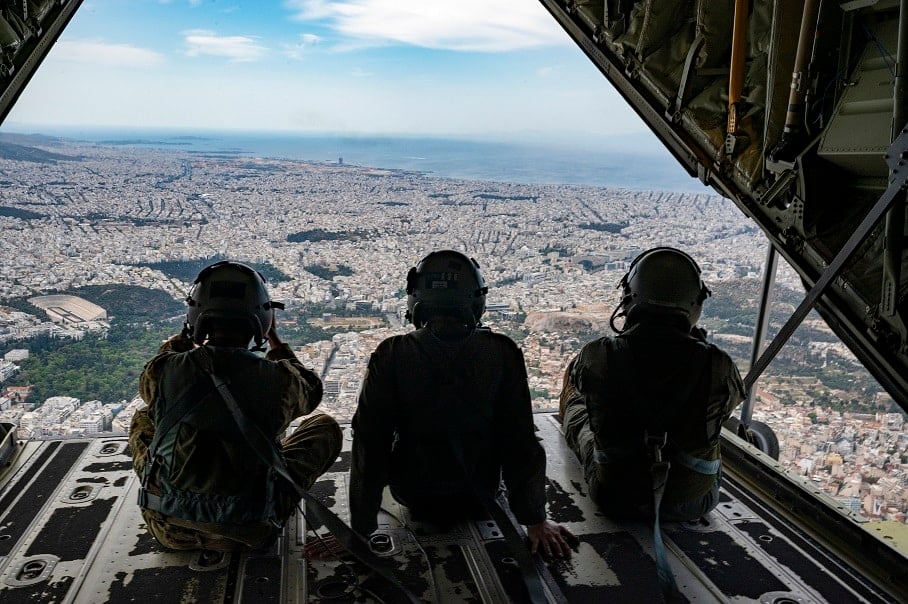

Greece and the US concluded a joint training exercise called “Stolen Cerberus XII,” which aims to enhance interoperability and airlift capabilities between the two countries.
The two-week exercise, which involved members of the US Air Force and Greek Armed Forces took place at Elefsina Air Force Base near Athens, Greece and is hosted annually by the 37th Airlift Squadron for the past 12 years.
Throughout the exercise, three C-30J Super Hercules aircraft from the 86th Airlift Wing in the United States, joined Hellenic Air Force C-130H Hercules crews to execute various airlift missions and joint training events, including low-cost,low altitude and container delivery system airdrops, static line and military free fall jumps, low-level tactical flight maneuvers, aeromedical evacution scenarios, Airfield Marking Pattern (AMP-4) landings, combat offloads and forklift familiarization.
“This year’s exercise pushed our crews to execute a diverse range of missions with a high level of coordination,” US Air Force Captain Eric Zielen-Ersing and commander of the 37th AS SCXII mission said. “The experience gained through this level of interoperability is critical to our mission’s readiness.”
Training scenarios were conducted across varied terrain, taking advantage of Greece’s diverse geography to replicate realistic mission environments. To ensure success, mission planners and aircrews worked closely with their Greek counterparts to build, brief and execute tactical flight routes under both daylight and low-light conditions.
“The C-130 is a day and night, all-weather tactical airlift platform,” US Air Force Captain Chris Gallimore, the mission’s planning chief said. “Training in an environment like this gives us the repetition and realism we need to remain effective.”

The integration between the armed forces of the two countries extended beyond flying units. Communications, contracting, supply and maintenance US airmen from Ramstein contributed to the execution of the exercise, working in conjunction with the Greek forces to sustain operations and overcome logistical challenges.
Among the many players was the 86th Aeromedical Evacuation Squadron, who conducted joint scenarios with Greek medical personnel aboard both US and Hellenic C-130 aircraft.
“My favorite part was collaborating with the Hellenic AE team,” said Staff Sgt. Charles Sanchez, 86th AES mission clinical coordinator. “We swapped patients mid-mission and continued training together, which was an excellent opportunity to compare techniques and learn from each other.”
With 12 iterations completed, the “Stolen Cerberus” training exercise has evolved, according to the US Air Force, into a reflection of the deepening strategic partnership between the US and Hellenic forces.
“Exercise Stolen Cerberus is an excellent training opportunity because it gives us the opportunity to fly with our NATO partners and to take lessons learned and to apply them to both of our tactics, techniques and procedures,” said Maj. Hannah Riddle, the detachment commander of this year’s “Stolen Cerberus.” “Through this exercise we build camaraderie with the Hellenic Air Force and we know that if we are called upon, we can operate seamlessly together from a strategically beneficial location with a partnership that has been wrought over for 12 years.”
